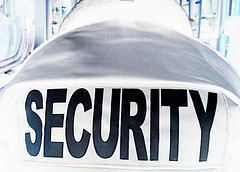There’s a lot to worry about online, and as an internet security software company we hope that you use our StopSign products to help keep you safe. But even if you don’t use our software, there are a few things you can easily do to ensure that you are less likely to be the victim of phishing, malware, or internet fraud.
- Secure? For sure! – “https”.
When a web page requests personal information, like your Social Security number, when you’re making an online purchase, or if you need to access your bank account online, make sure that you look in the address bar of your browser to make sure you are on a secure server.
It’s easy to see if the site you’re on is secure by seeing if the URL starts with “https”. Non-secure websites use “http”, so just look for that additional “s”. No real company who is concerned for your security will ever ask you for any sensitive, banking, or credit card-related information without a secure server in place. Anything else is a scam, pure and simple.
- Watch where you’re browsing.
A lot of phishing attempts are done by using similarly-named domains or by tricks with the URL. The domain name of the website you are trying to view should always be before the “.com” (or “.net”, or whatever top level domain they use).
For example, our blog is supposed to be on stopsign.com. If you saw blog.stopsign.example.com, that is not the official StopSign blog, because our domain name (stopsign) isn’t before the “.com”. See our blog post “How to Spot a Fake Website” for more information on fake websites.
- Use a secure password.
Making a secure password is a simple solution to staving off the casual hacker who wants to try to break into one of your online accounts. Often one of the first things they do is use a “dictionary” of common passwords and/or common words to try to access accounts. See our blog post “12 Tips for Making a Good Password” for additional details and tips on secure password creation.
- Don’t open that email attachment.
Like most people you probably get dozens of emails per day. It’s not uncommon to get attachments to your email with pictures from friends and family, but make sure that you never open an email attachment from an unknown person. Lots of viruses and spyware are spread online by email, and if you open one of them you’ll be instantly infected.
- If it’s too good to be true.
Beware the scam artists online who prey on the kind-hearted and the uninformed. The Nigerian scams (and their many variants), “donation” seekers who want your bank account information, and other pests flood the internet daily. If something you’re being told seems too good to be true, it is, and if an email or website is asking you for private information it’s more than likely a scam or some other type of internet fraud. Unless of course it really is from your bank or the government, but it would still be on a secure server (when in doubt, give them a call and ask if they actually sent the email), and you should also be sure to watch where you’re browsing!
So there you go… 5 simple things that you can easily do to make sure that your browsing experience is safe and worry-free.
If you're looking for great anti-virus software that won't break the bank, try StopSign. You don't pay extra for tech support for difficult malware, and our web protection software just works. Download & install StopSign to find out why our members choose us over the other options.





Recent Blog Comments